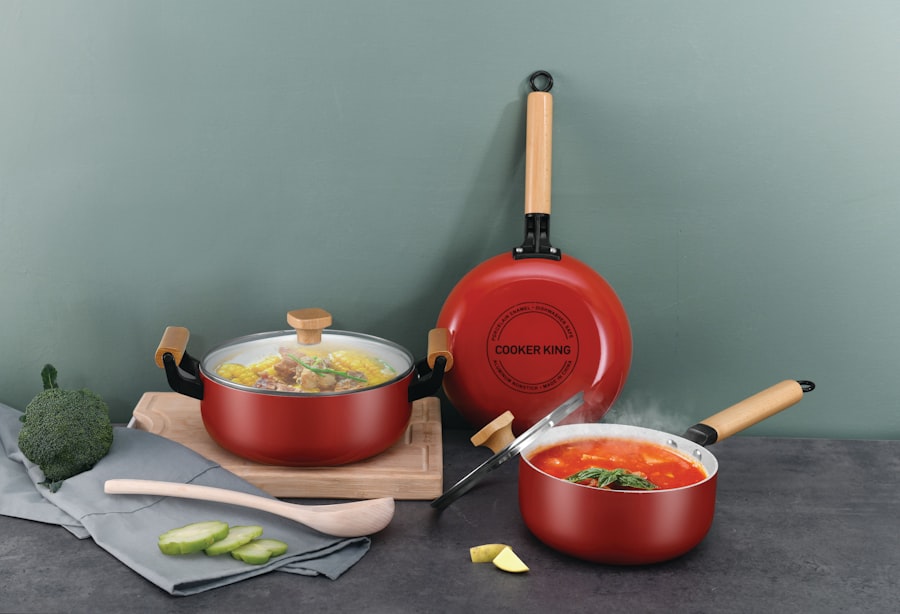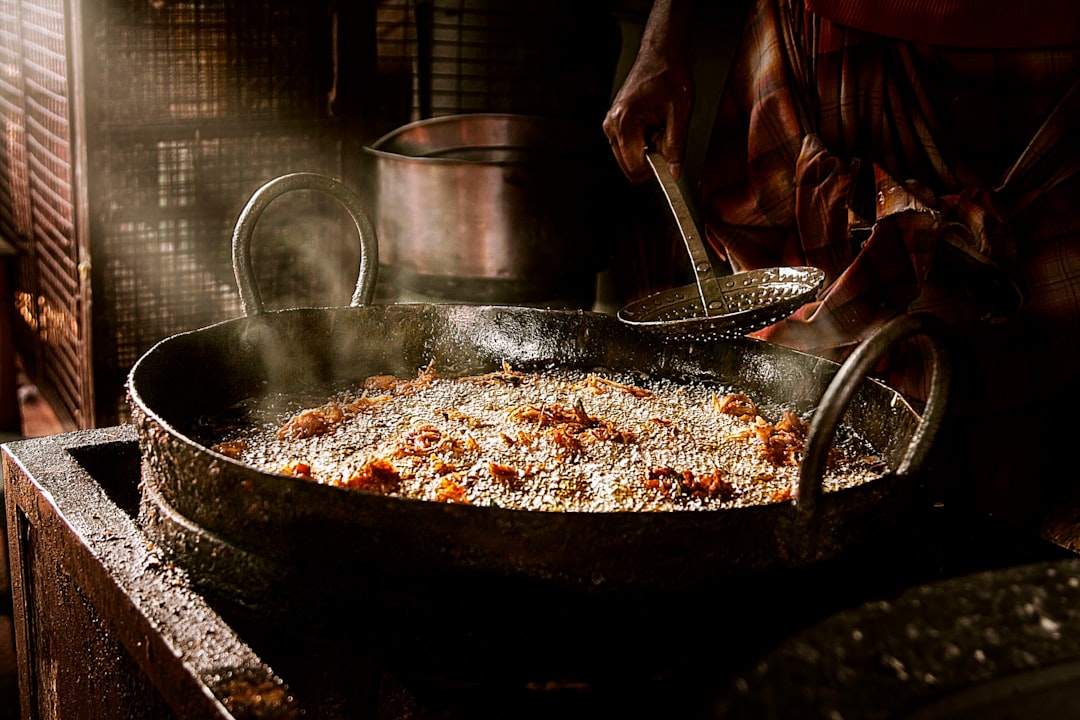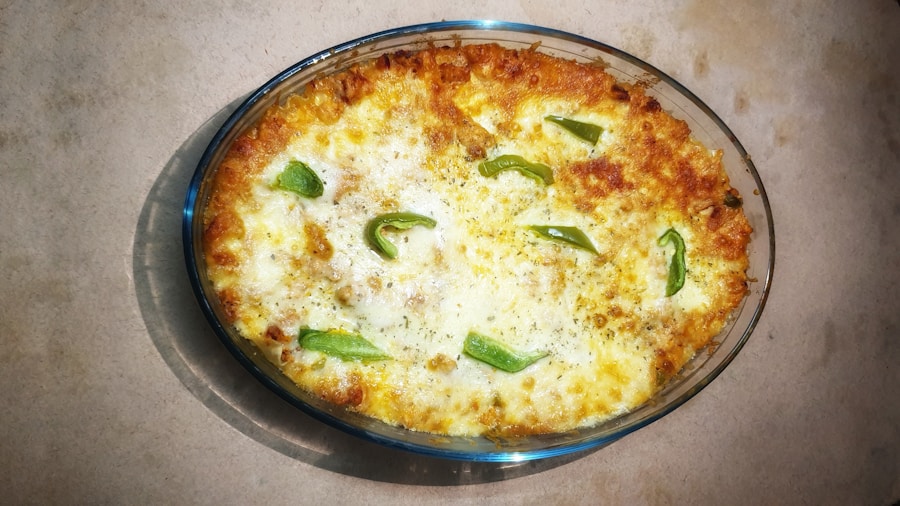Ratatouille, a dish that has become synonymous with French cuisine, boasts a rich history that reflects the agricultural traditions of Provence. Its origins can be traced back to the 18th century, where it was initially a humble peasant dish made from the seasonal vegetables that were readily available in the region. The name “ratatouille” itself is derived from the French verb “touiller,” which means to stir.
This etymology hints at the dish’s rustic roots, where simple ingredients were combined and cooked together in a pot, creating a hearty meal that was both nourishing and satisfying. As the dish evolved, it began to gain recognition beyond its humble beginnings. By the 19th century, ratatouille had transitioned from a peasant staple to a beloved dish served in restaurants across France.
The classic version of ratatouille, as we know it today, typically includes eggplant, zucchini, bell peppers, tomatoes, onions, and herbs. Each ingredient contributes to the dish’s vibrant colors and complex flavors, making it not only a culinary delight but also a feast for the eyes. The rise of ratatouille in French gastronomy can be attributed to its adaptability and the way it embodies the essence of Provençal cooking—simple yet flavorful.
Key Takeaways
- Ratatouille is a classic French dish with a rich history dating back to the 18th century.
- The unique combination of ingredients like eggplant, zucchini, and bell peppers gives ratatouille its distinct flavor and texture.
- Layering flavors is key to creating a delicious ratatouille, with each ingredient adding its own depth and complexity to the dish.
- Ratatouille is a versatile dish that can be served as a main course, a side dish, or even as a topping for pasta or bread.
- With the right ingredients and cooking techniques, preparing ratatouille can be a simple and rewarding culinary experience.
Ingredients That Make Ratatouille Unique
The uniqueness of ratatouille lies in its combination of fresh, seasonal vegetables that reflect the bounty of the Mediterranean climate. Eggplant is often considered the star ingredient; its creamy texture and ability to absorb flavors make it an essential component. Zucchini adds a subtle sweetness and a tender bite, while bell peppers contribute a crunchy texture and vibrant color.
Tomatoes, often used in their fresh form or as a sauce, provide acidity and depth, balancing the richness of the other vegetables. Herbs play a crucial role in defining the flavor profile of ratatouille. Fresh basil, thyme, and rosemary are commonly used to enhance the dish’s aromatic qualities.
The use of high-quality olive oil is also paramount; it not only serves as a cooking medium but also adds richness and depth to the overall flavor. The careful selection and preparation of these ingredients are what set ratatouille apart from other vegetable dishes, allowing each component to shine while harmonizing beautifully with one another.
The Art of Layering Flavors in Ratatouille

Creating a perfect ratatouille is an exercise in layering flavors, where each ingredient is treated with care to build complexity. The process often begins with sautéing onions and garlic in olive oil until they become fragrant and translucent. This foundational step lays the groundwork for the dish, as it infuses the oil with aromatic qualities that will permeate the entire mixture.
Once the base is established, the vegetables are added in stages, allowing each one to cook down and release its natural juices before introducing the next. For instance, eggplant is typically added first due to its longer cooking time; it needs to soften and caramelize to develop its full flavor potential. Following this, zucchini and bell peppers are introduced, allowing their sweetness to meld with the savory notes of the onions and garlic.
Finally, tomatoes are added towards the end of cooking to prevent them from becoming overly mushy while still imparting their acidity and brightness to the dish. This meticulous approach to layering not only enhances the taste but also creates a visually appealing presentation.
The Versatility of Ratatouille in French Cuisine
| Aspect | Metrics |
|---|---|
| Ingredients | Eggplant, zucchini, bell peppers, tomatoes, onions, garlic, herbs |
| Preparation Time | Average 30 minutes |
| Serving Suggestions | As a side dish, over pasta, with crusty bread, as a topping for fish or chicken |
| Health Benefits | High in fiber, vitamins, and antioxidants |
| Regional Variations | Provencal, Niçoise, Ratatouille gratin |
Ratatouille’s versatility extends beyond being a standalone dish; it can serve as a side, a filling for crepes or omelets, or even as a topping for grilled meats or fish. In French cuisine, it is often paired with crusty bread or served alongside polenta or rice, making it an adaptable option for various meals. Its ability to complement other dishes while standing out on its own is one of the reasons ratatouille has remained popular over centuries.
Moreover, ratatouille can be enjoyed hot or cold, making it suitable for any occasion. When served warm, it offers comfort and warmth during colder months; conversely, when chilled, it becomes a refreshing addition to summer picnics or buffets. This adaptability allows chefs and home cooks alike to experiment with different presentations and pairings, ensuring that ratatouille remains relevant in contemporary culinary practices.
How to Prepare Ratatouille: A Step-by-Step Guide
Preparing ratatouille requires attention to detail but is ultimately a straightforward process that can be accomplished by cooks of all skill levels. To begin, gather your ingredients: eggplant, zucchini, bell peppers, tomatoes, onions, garlic, fresh herbs (such as basil and thyme), and high-quality olive oil. Start by washing and chopping all vegetables into uniform pieces; this ensures even cooking and enhances the dish’s visual appeal.
Next, heat olive oil in a large skillet or Dutch oven over medium heat. Add diced onions and minced garlic, sautéing until they become fragrant and translucent—this should take about 5 minutes. Once the base is ready, add diced eggplant and cook for approximately 10 minutes until it begins to soften.
Follow this by adding zucchini and bell peppers; continue cooking for another 5-7 minutes until they are tender yet still retain some bite. Finally, incorporate chopped tomatoes along with your chosen herbs and season with salt and pepper to taste. Allow everything to simmer together for about 20-30 minutes on low heat, stirring occasionally until all vegetables are tender and flavors meld beautifully.
Pairing Ratatouille with the Perfect Wine

When it comes to pairing wine with ratatouille, one must consider both the dish’s ingredients and its preparation method. A classic choice would be a light-bodied red wine such as Pinot Noir or Gamay. These wines offer bright acidity that complements the freshness of the vegetables without overpowering their delicate flavors.
The earthy notes found in these wines also resonate well with the herbaceous qualities of ratatouille. For those who prefer white wine, a crisp Sauvignon Blanc or a light-bodied Chardonnay can be excellent options. The acidity in these wines cuts through the richness of the olive oil while enhancing the overall dining experience.
Additionally, rosé wines are particularly well-suited for ratatouille due to their versatility; they can be enjoyed chilled during warm weather or slightly warmer during cooler months, making them an ideal companion for this dish throughout the seasons.
Ratatouille Variations from Different Regions of France
While ratatouille is most commonly associated with Provence, various regions in France have their own interpretations of this beloved dish. In Nice, for example, “ratatouille niçoise” incorporates local ingredients such as olives and capers, adding briny notes that elevate the traditional recipe. This variation often features a more pronounced emphasis on tomatoes and may include additional herbs like oregano or marjoram.
In contrast, regions like Alsace may present ratatouille with a twist by incorporating local specialties such as sauerkraut or smoked meats. This adaptation reflects the region’s culinary influences from neighboring countries like Germany while still honoring the essence of ratatouille as a vegetable-centric dish. These regional variations showcase how ratatouille can be adapted to local tastes and ingredients while maintaining its core identity as a celebration of seasonal produce.
Ratatouille: A Healthy and Nutritious Dish
Ratatouille stands out not only for its flavor but also for its health benefits. Packed with an array of vegetables—each rich in vitamins, minerals, and antioxidants—this dish offers a wealth of nutritional value. Eggplant is known for its high fiber content and antioxidants like nasunin, which supports heart health by improving blood circulation.
Zucchini provides hydration due to its high water content while also being low in calories. Tomatoes are another powerhouse ingredient in ratatouille; they are rich in lycopene—a potent antioxidant linked to reduced risk of chronic diseases such as heart disease and cancer. Additionally, bell peppers are loaded with vitamin C and other essential nutrients that bolster immune function.
By consuming ratatouille regularly, individuals can enjoy a delicious meal while reaping numerous health benefits associated with these vibrant vegetables.
Ratatouille: A Vegetarian’s Delight
For vegetarians seeking flavorful meal options, ratatouille serves as an ideal choice that showcases how vegetables can take center stage without sacrificing taste or satisfaction. The combination of various vegetables creates a symphony of flavors that appeals to both vegetarians and meat-eaters alike. Its hearty nature makes it suitable for main courses or side dishes without needing meat for substance.
Moreover, ratatouille can easily be adapted to suit different dietary preferences or restrictions. For instance, those following vegan diets can enjoy this dish without any modifications since it contains no animal products. Additionally, it can be served over grains like quinoa or farro for added protein or paired with legumes for an even more nutritious meal option.
Ratatouille: A Dish for Every Season
One of ratatouille’s most appealing aspects is its seasonal adaptability; it can be enjoyed year-round by utilizing different vegetables based on availability. In summer months when produce is at its peak freshness—think ripe tomatoes bursting with flavor—ratatouille shines as a vibrant celebration of seasonal bounty. Conversely, during colder months when root vegetables are more prevalent, variations may include carrots or parsnips alongside traditional ingredients.
This flexibility allows cooks to experiment with different combinations while still honoring the essence of ratatouille as a vegetable-centric dish rooted in Provençal tradition. Whether served warm on chilly evenings or chilled during hot summer days alongside crusty bread or grilled meats—ratatouille remains relevant throughout all seasons.
Ratatouille: Tips and Tricks for Perfecting the Dish
To achieve perfection when preparing ratatouille requires attention to detail and some insider tips that can elevate your dish from good to exceptional. First and foremost is selecting high-quality ingredients; fresh vegetables will yield better flavor than those that have been sitting on store shelves for too long. When possible, opt for organic produce sourced from local farmers’ markets—this not only supports sustainable agriculture but also ensures peak freshness.
Another key tip involves salting your eggplant before cooking; this process draws out excess moisture while reducing bitterness—resulting in a creamier texture once cooked down into ratatouille. Additionally, consider roasting some vegetables separately before incorporating them into your final mixture; this technique enhances caramelization and adds depth of flavor that can elevate your dish significantly. By following these tips along with practicing patience during cooking—allowing flavors time to meld—you’ll find yourself creating an unforgettable ratatouille that pays homage to its rich culinary heritage while delighting palates around your table.



